Abstract
Data from the Seventh Periodic Survey of Physicians are examined for differences in referral rates among five major medical specialties. Referral rates for each specialty are regressed against physician-related and patient-related predictor variables. On the basis of Freidson's distinction between "colleague-dependent" and "client-dependent" specialties, the hypothesis tested is that physician-related variables explain more of the variance in referral rates of colleague-dependent than of client-dependent specialists. Although this use of Freidson's classification is not strongly supported by the results, the variables found to correlate with referral differences suggest that public policies aimed to increase access to care may produce a reduction in continuity of care as an unintended second-order effect.
Full text
PDF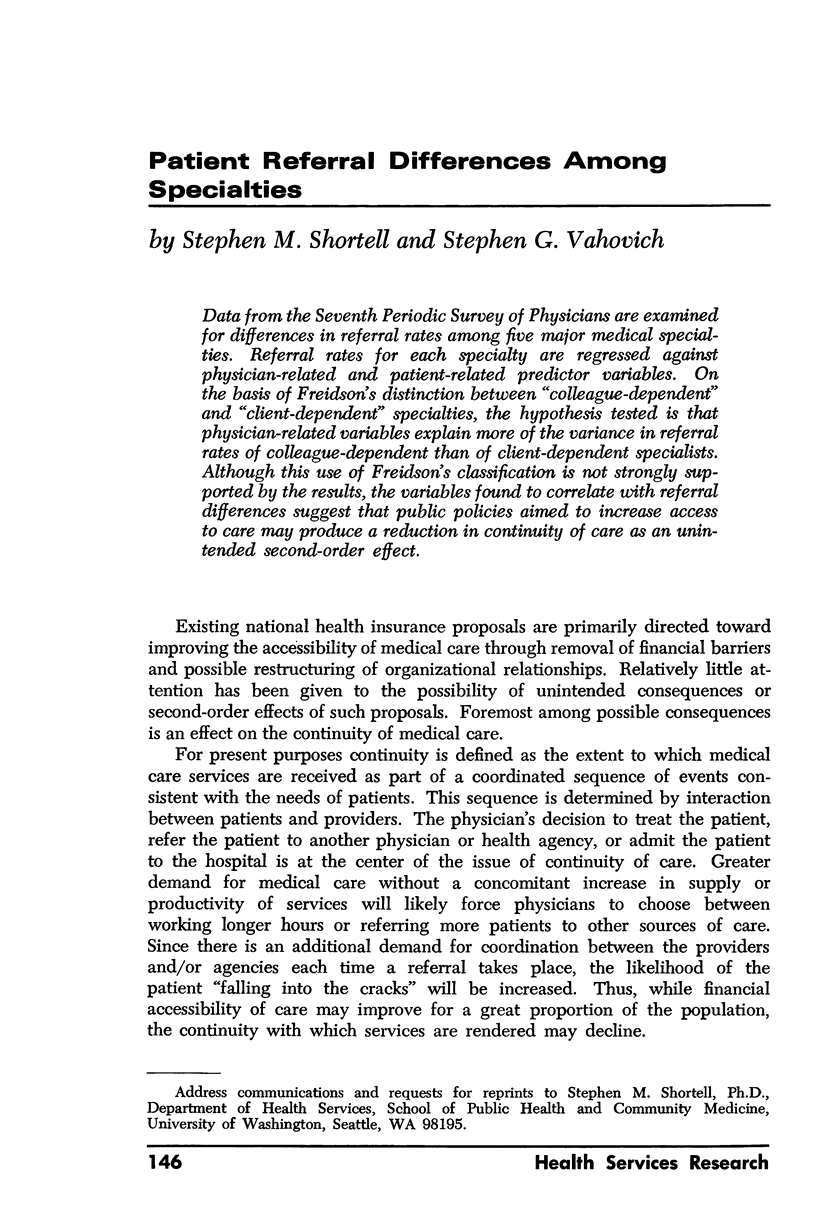
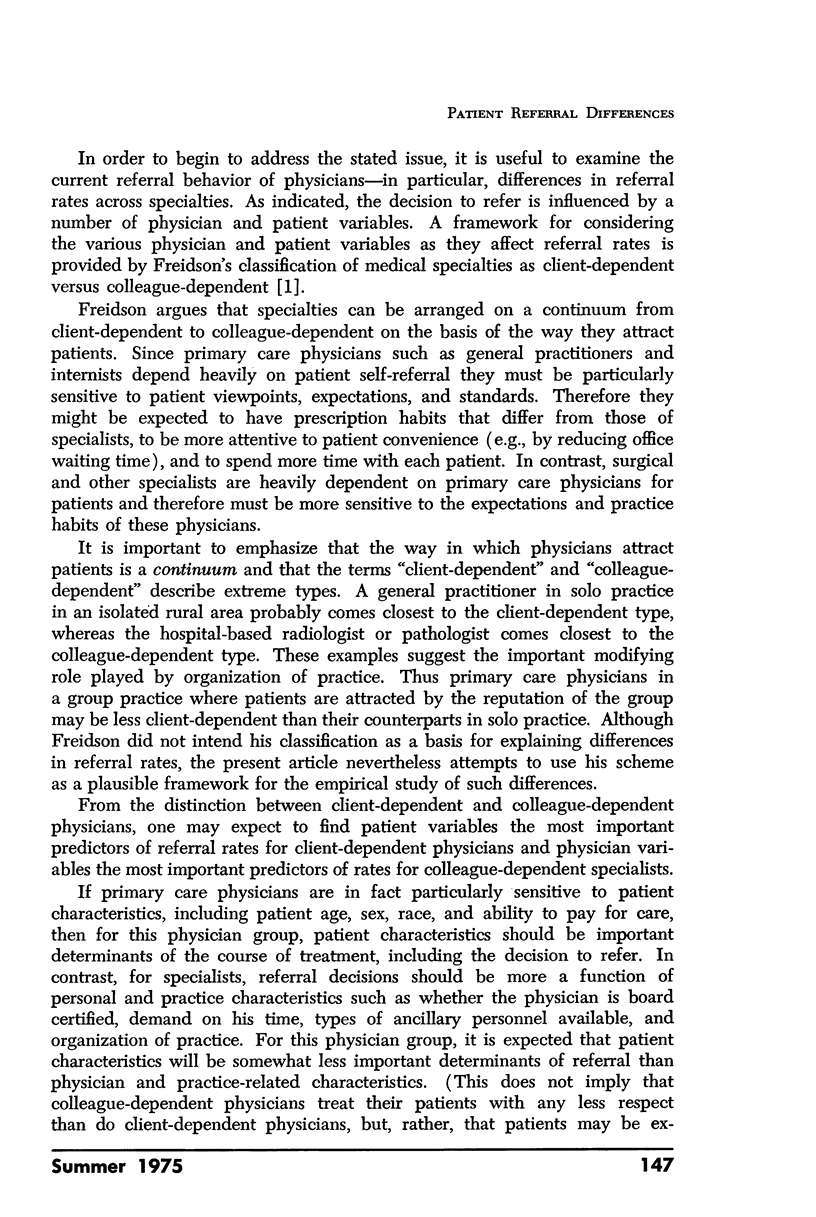
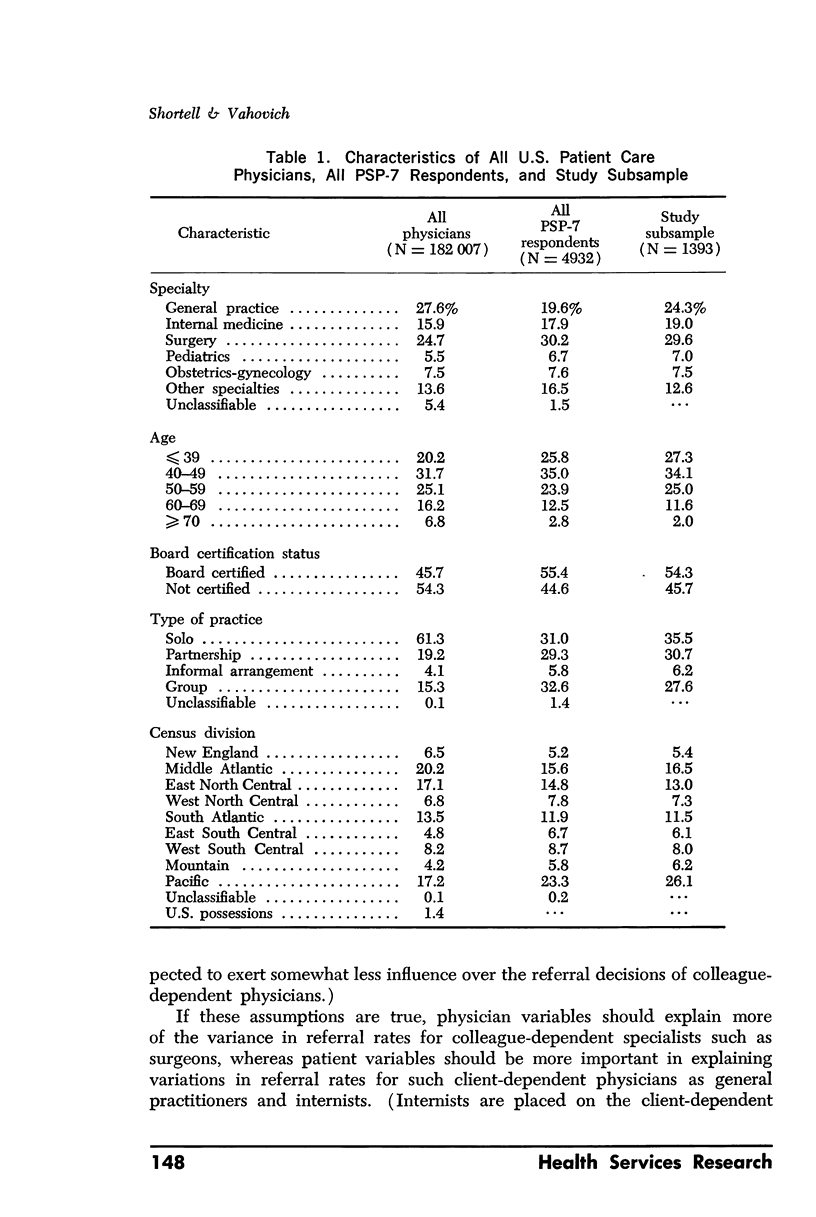
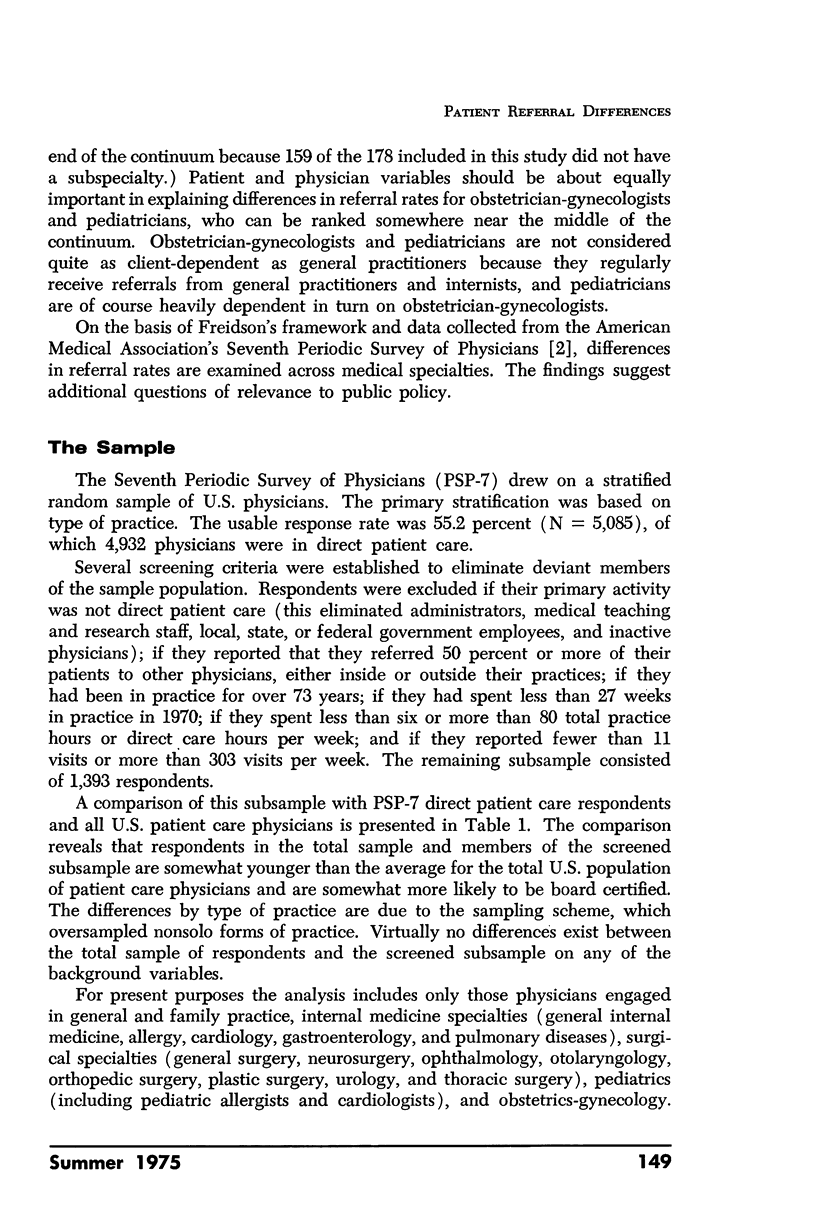
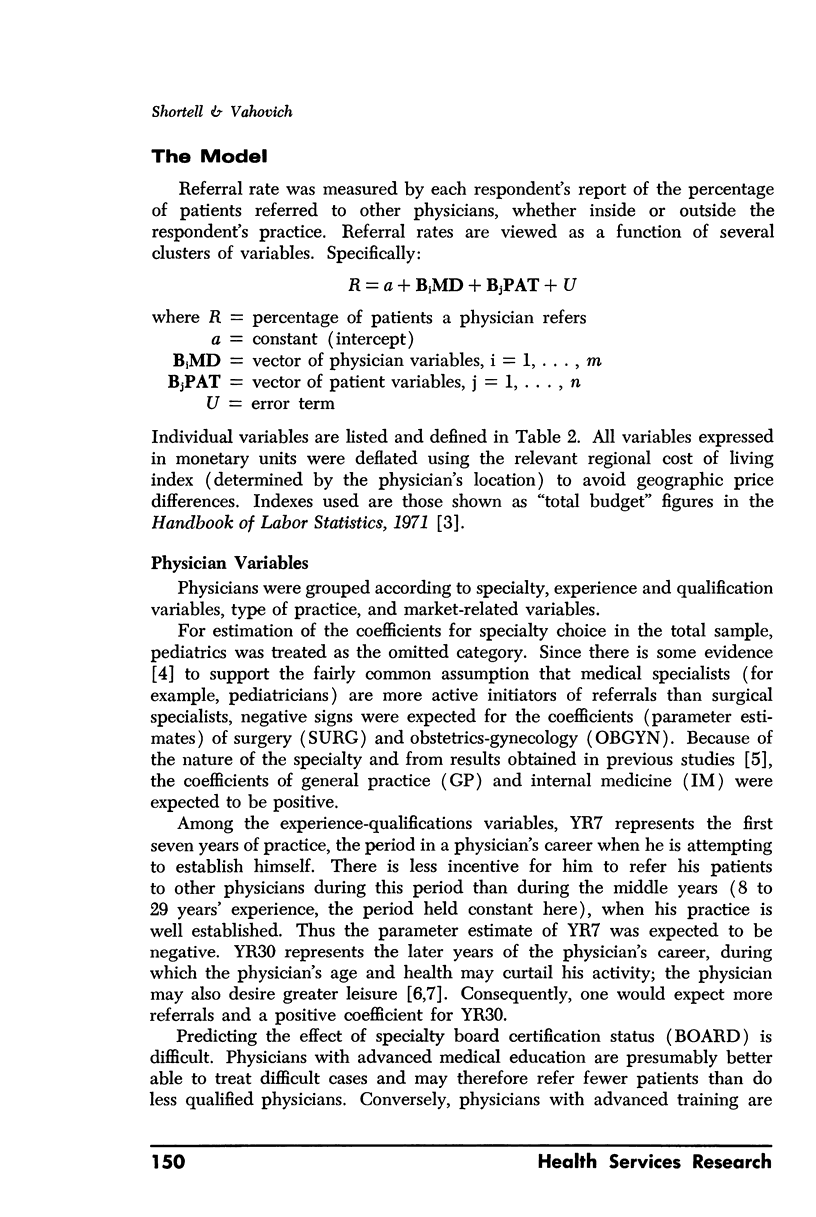
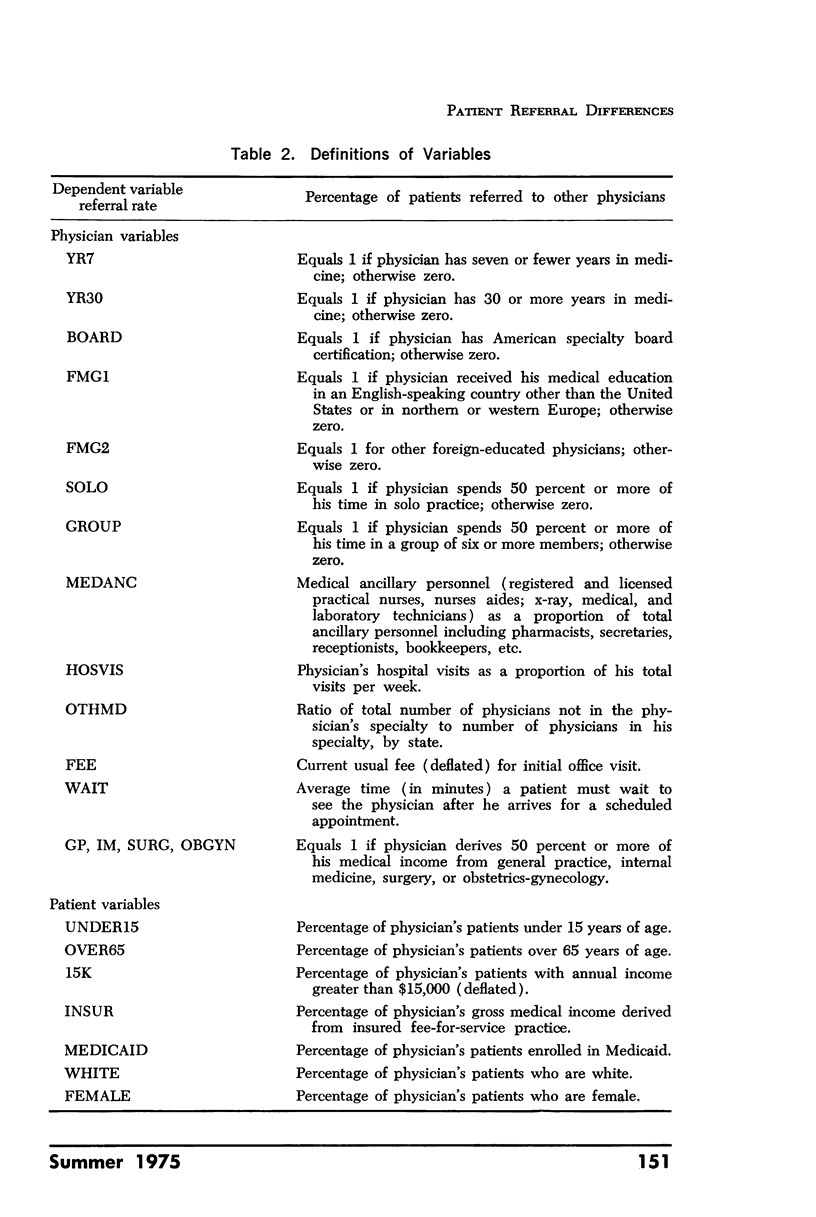
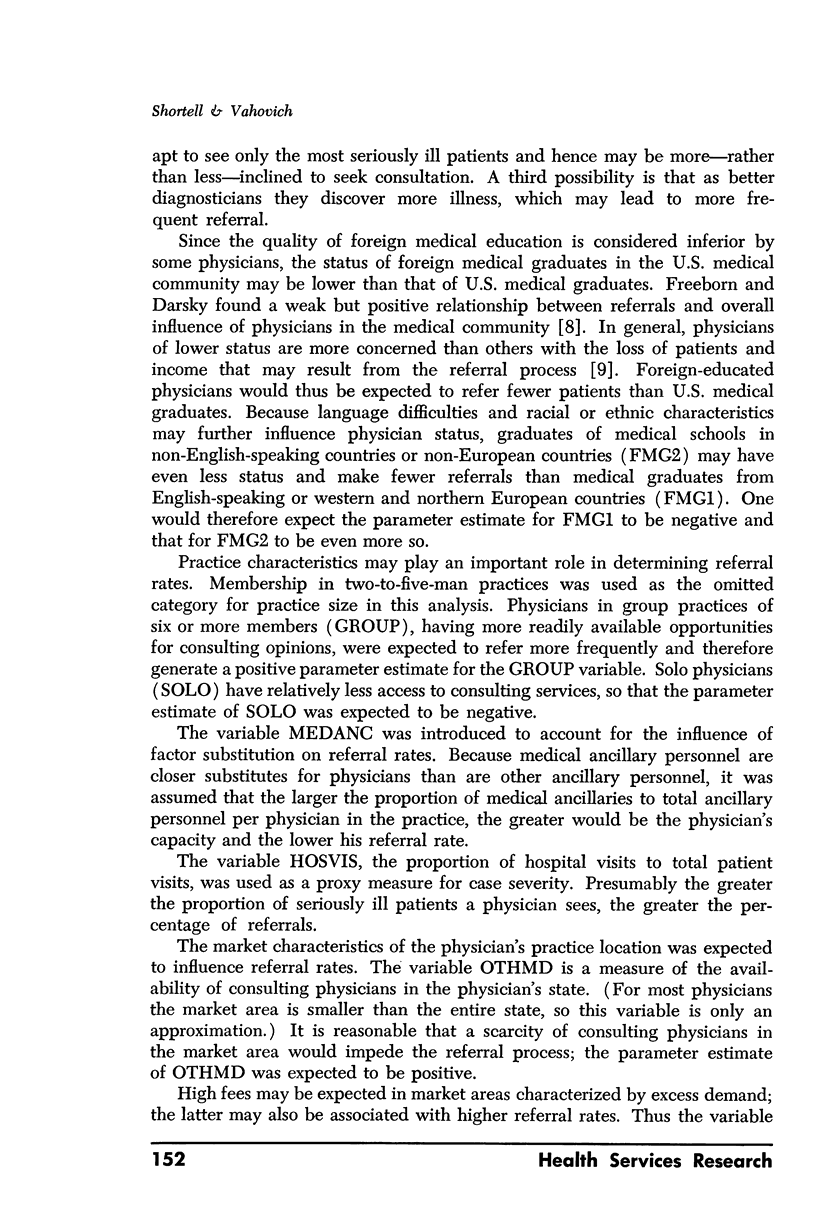
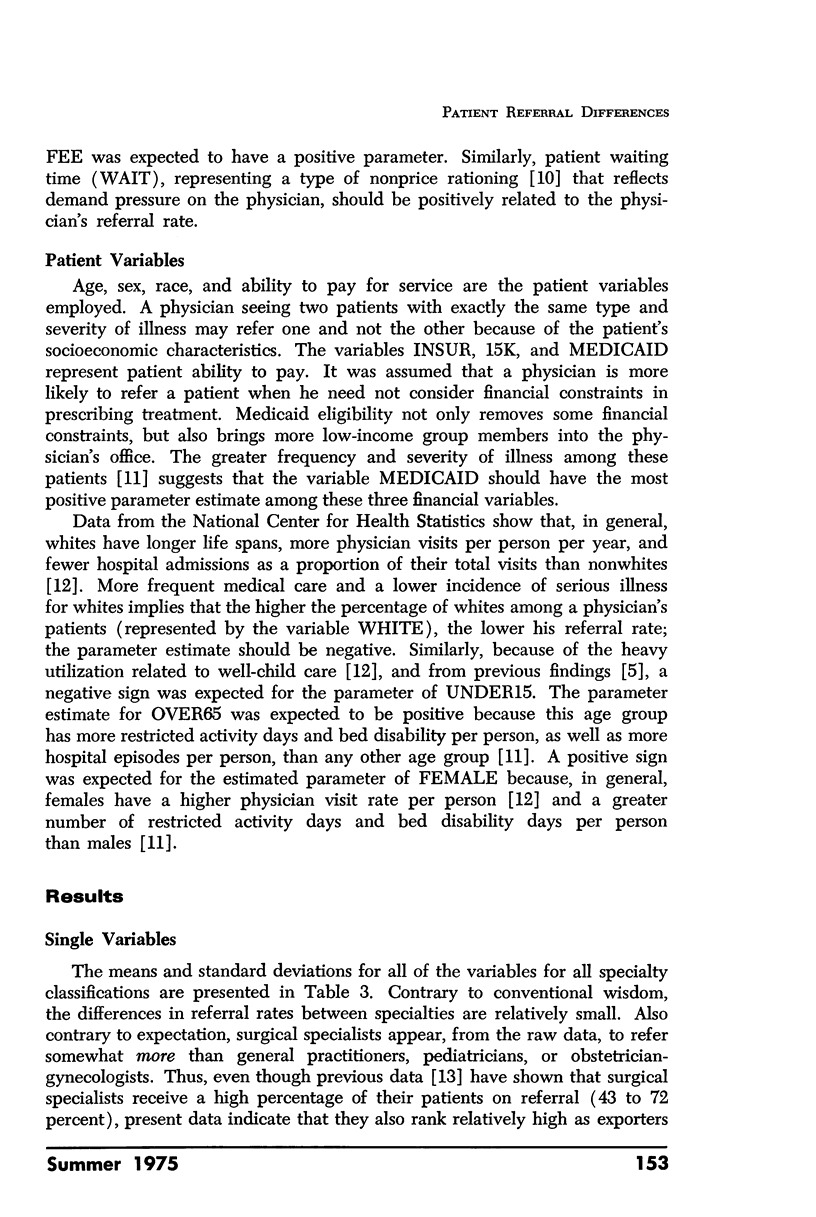
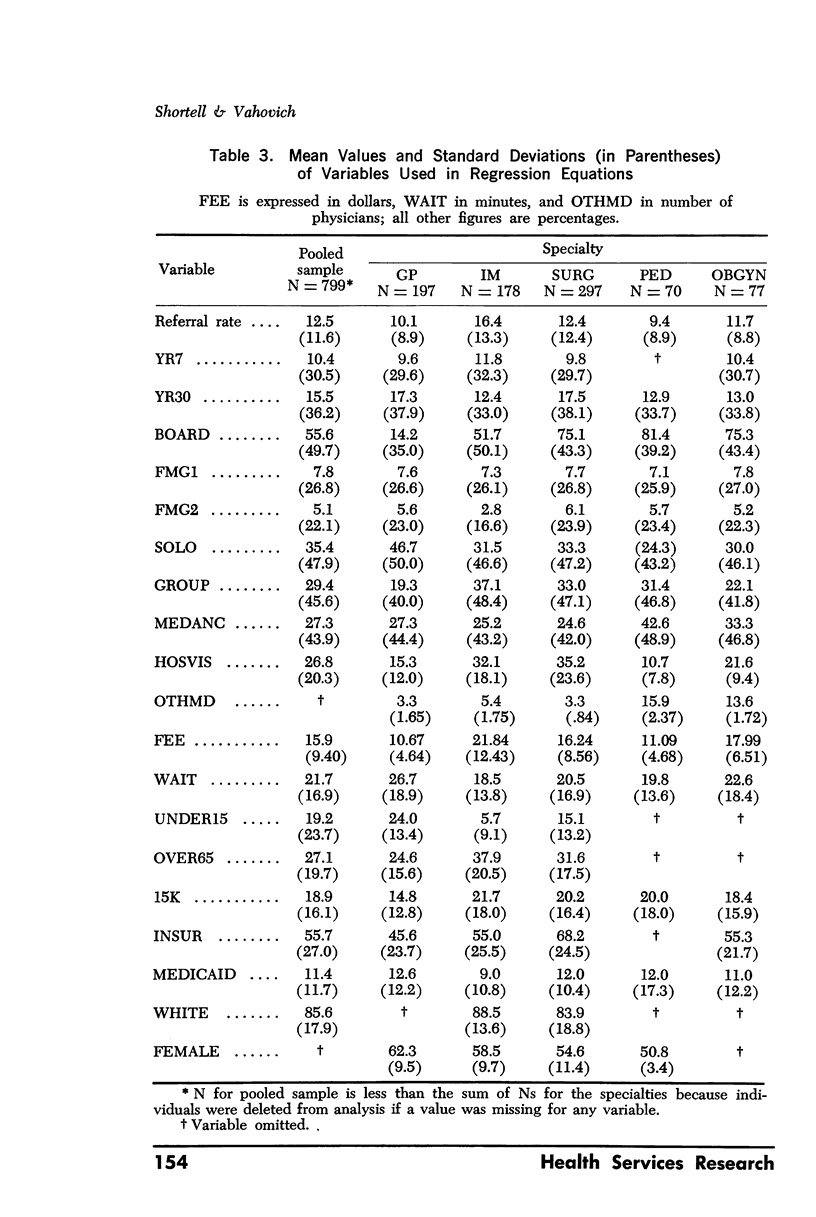
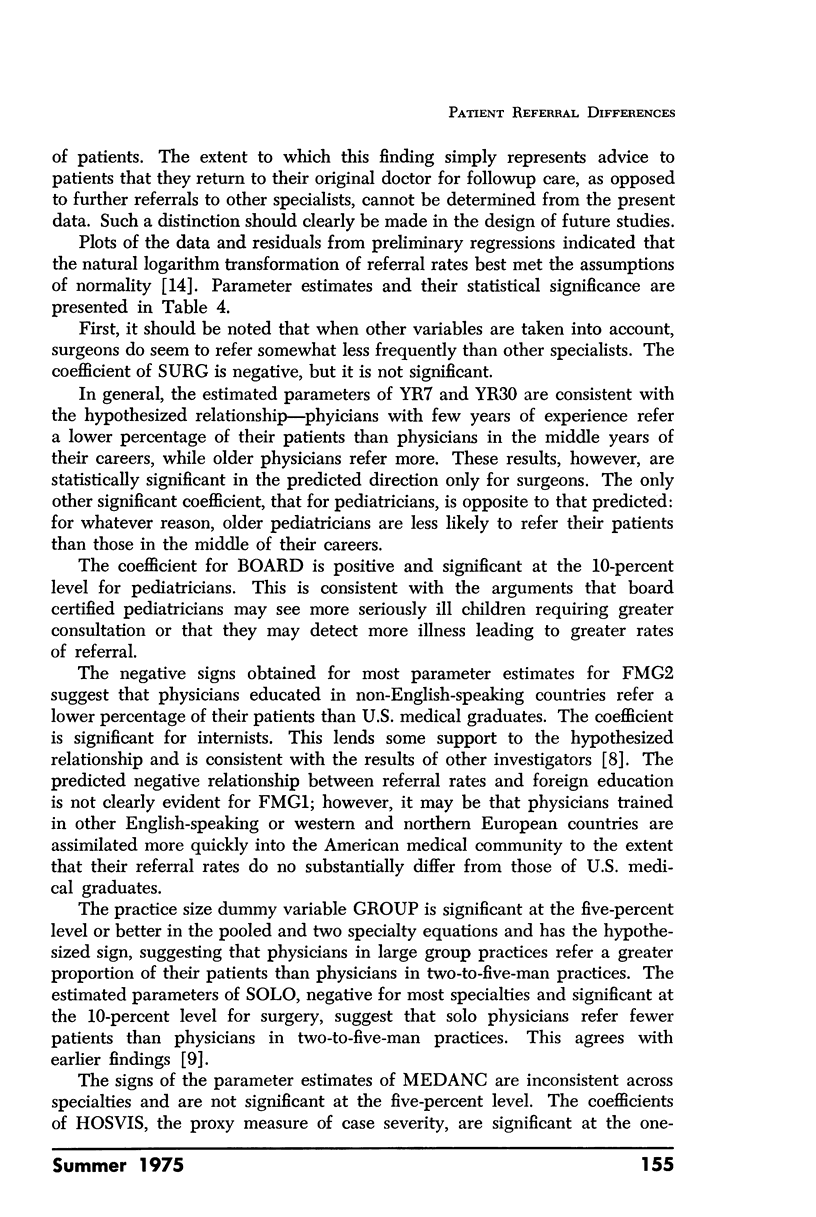
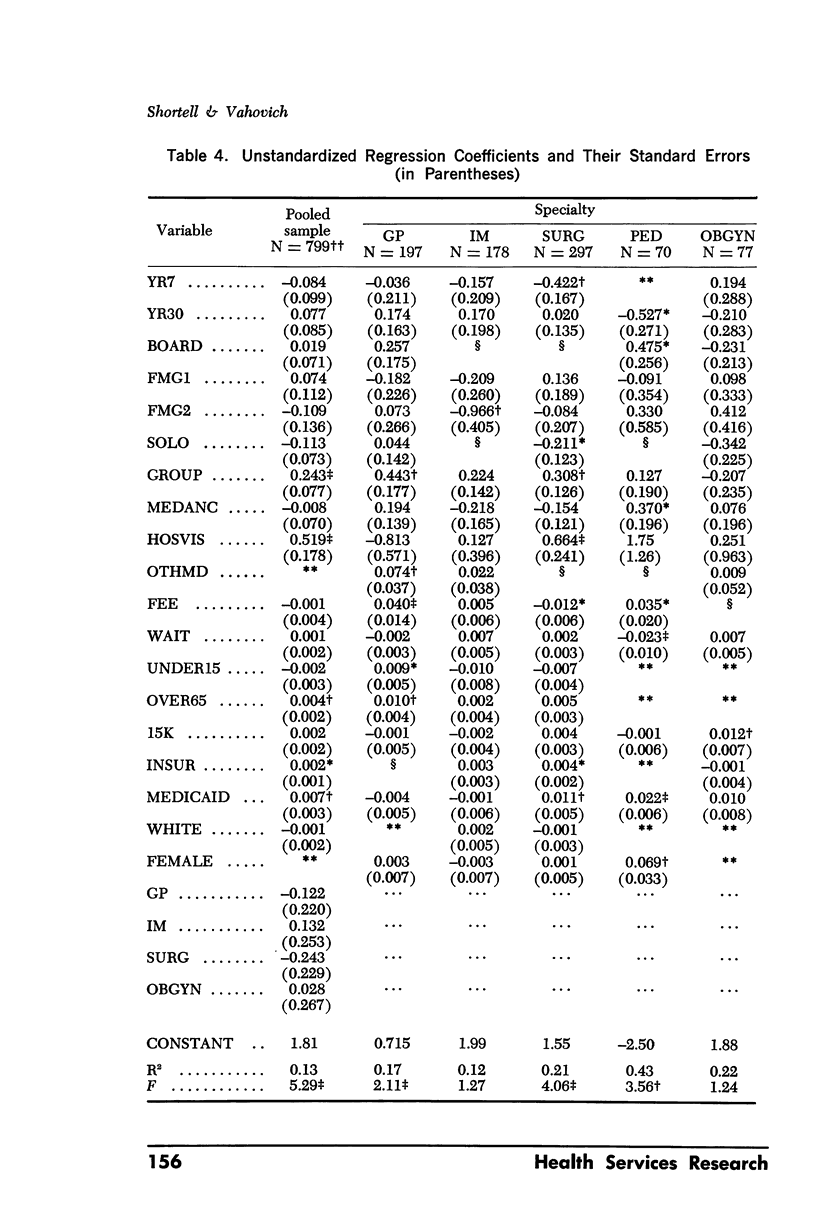
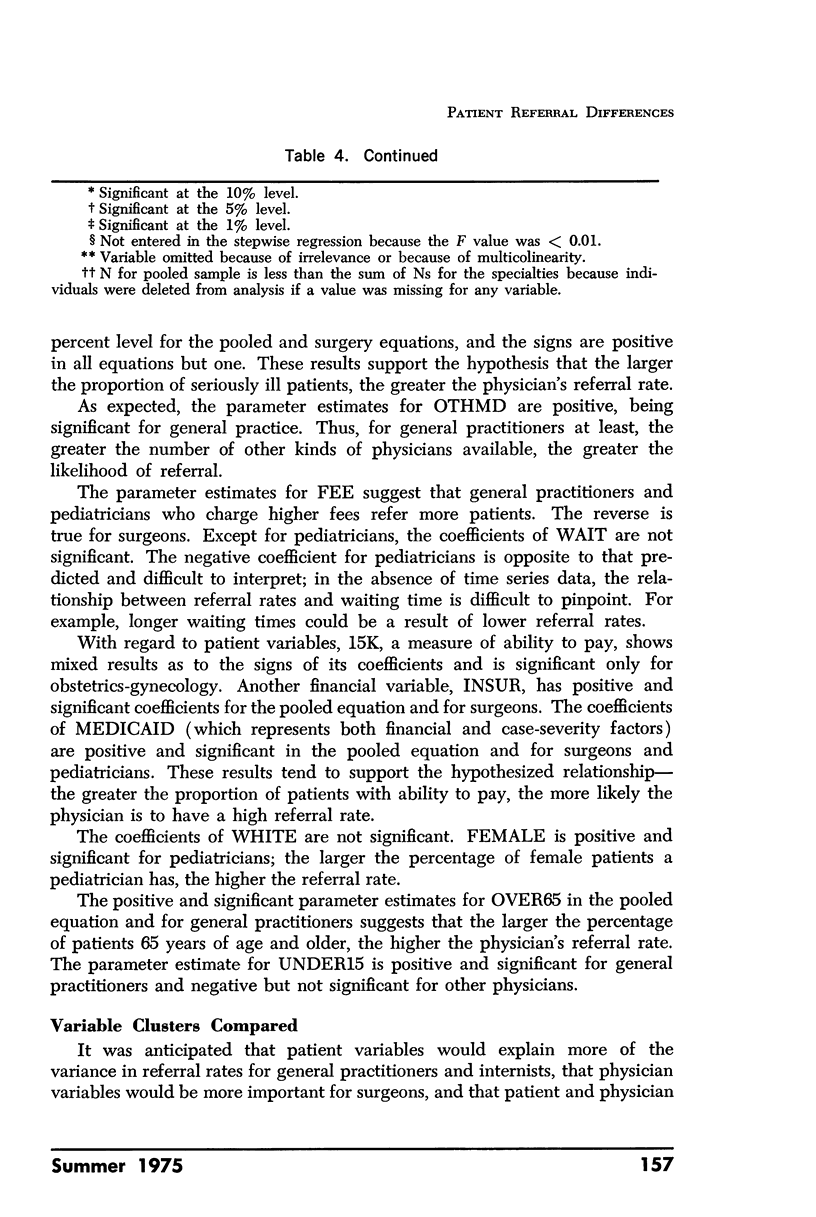
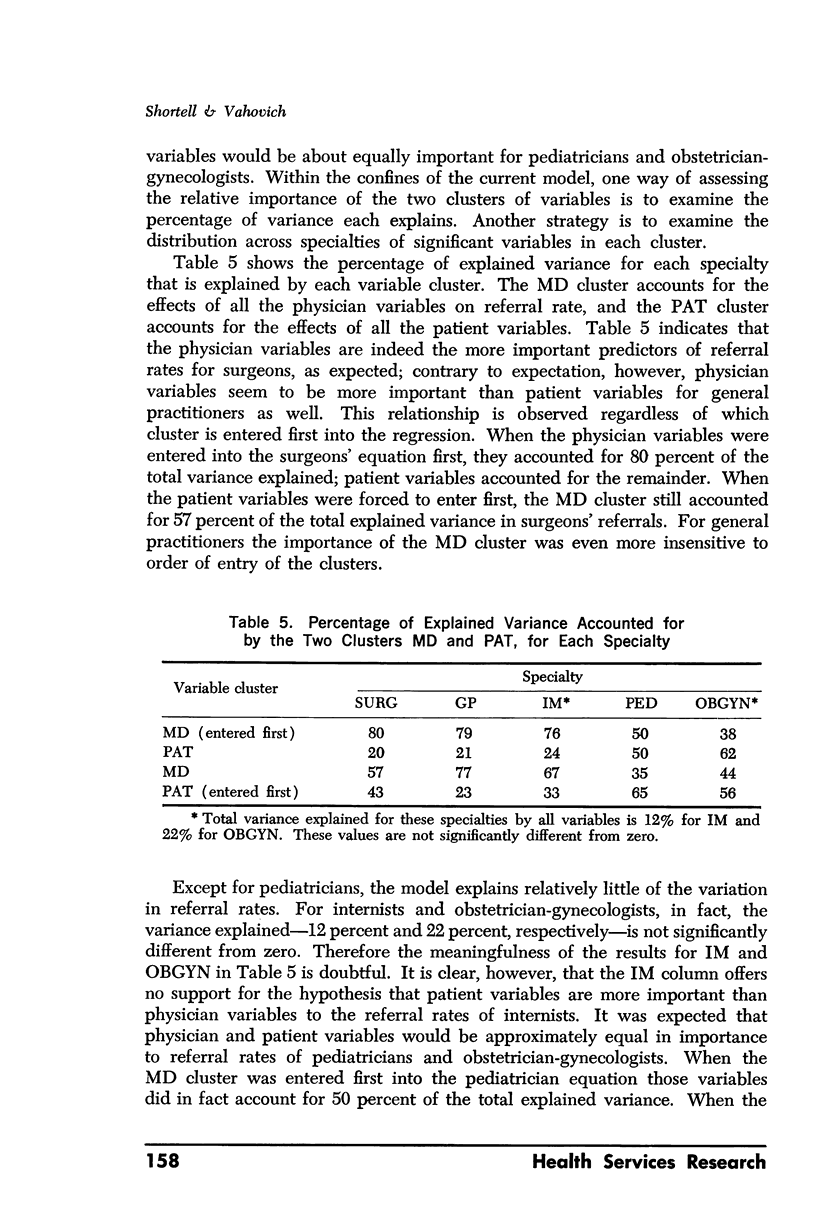
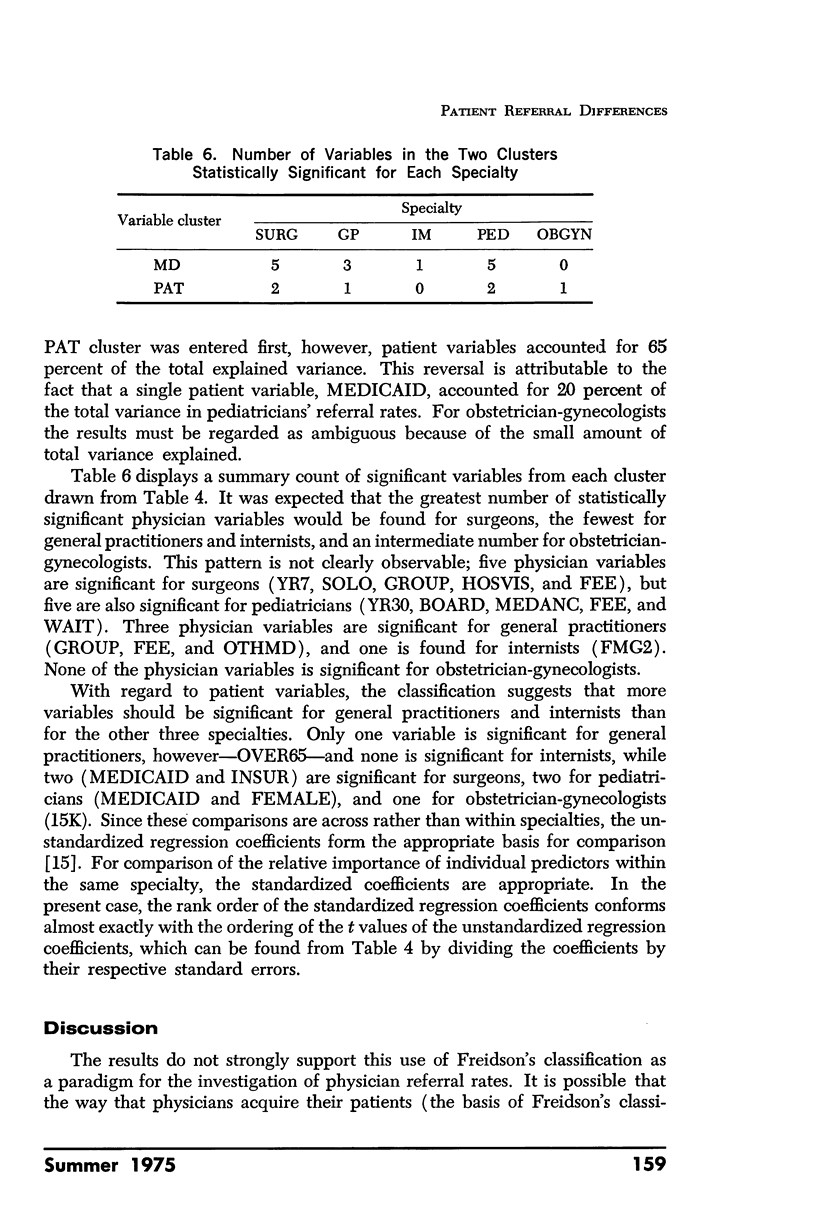
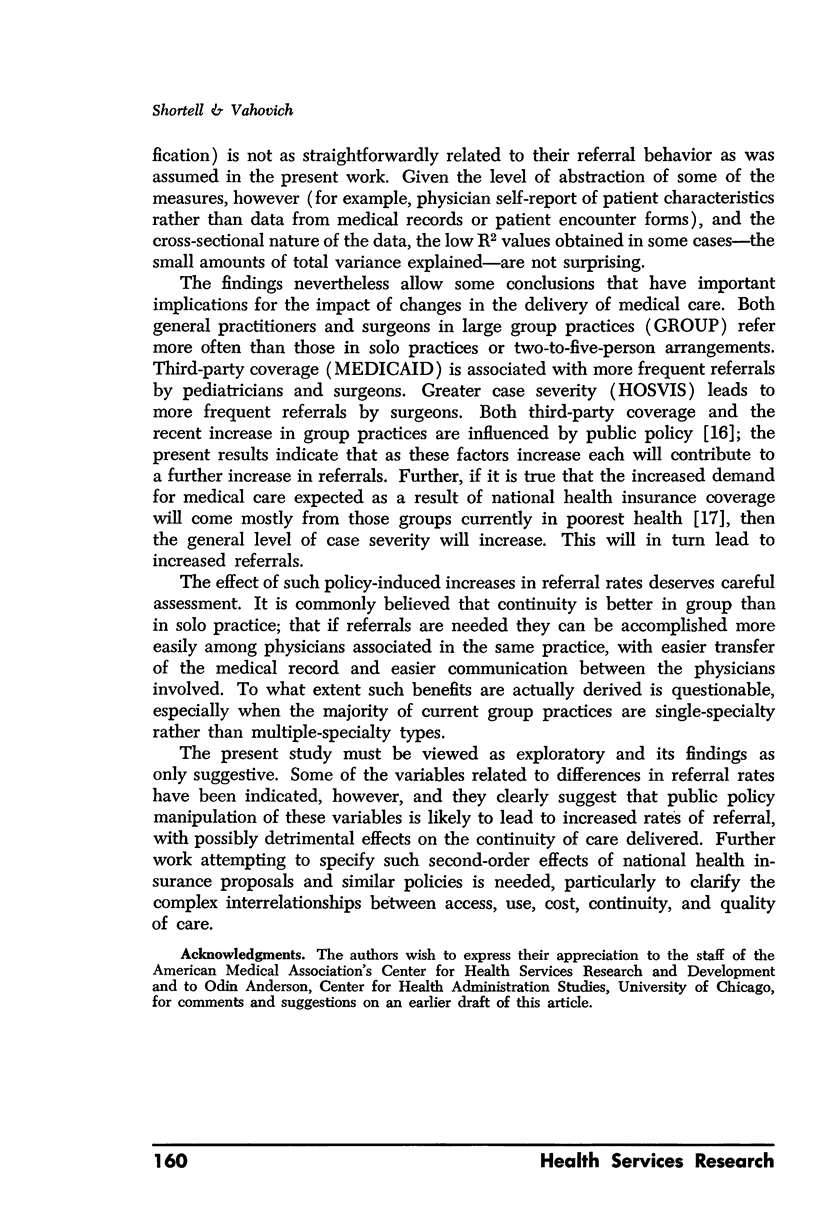
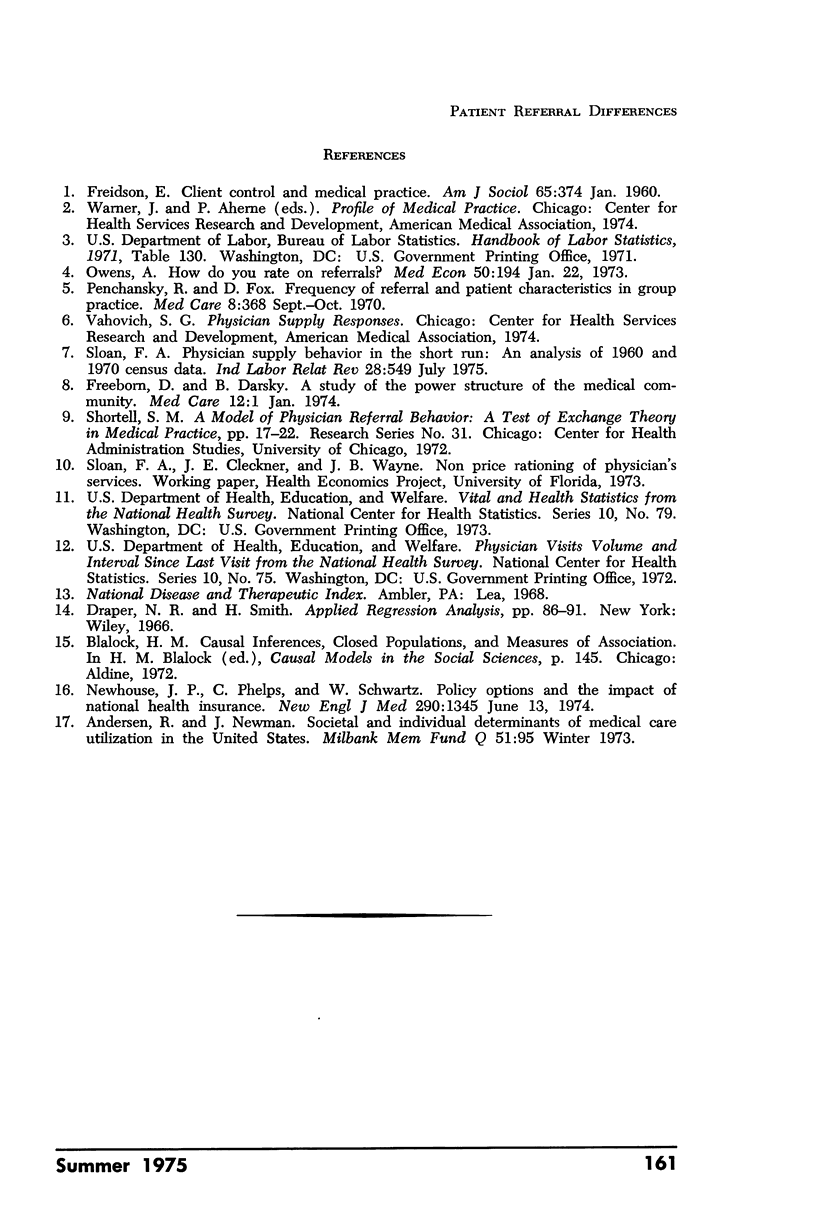
Selected References
These references are in PubMed. This may not be the complete list of references from this article.
- Newhouse J. P., Phelps C. E., Schwartz W. B. Policy options and the impact of national health insurance. N Engl J Med. 1974 Jun 13;290(24):1345–1359. doi: 10.1056/NEJM197406132902404. [DOI] [PubMed] [Google Scholar]
- Penchansky R., Fox D. Frequency of referral and patient characteristics in group practice. Med Care. 1970 Sep-Oct;8(5):368–385. doi: 10.1097/00005650-197009000-00004. [DOI] [PubMed] [Google Scholar]


